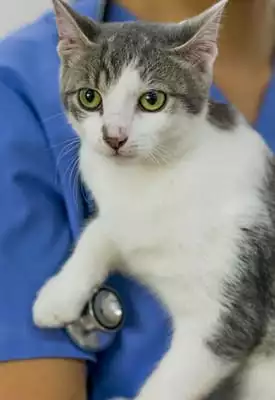Spay and Neuter in Buffalo Grove, IL
Spay and neuter surgery refers to the sterilization of your pet to keep them from producing unwanted litters. It also sets them up for a lifetime of better health and well-being. When properly timed, your pet can get the most out of their surgery, including various health and behavioral benefits. At Buffalo Grove Animal Hospital, we work with every pet and owner individually to determine the best time for a spay or neuter surgery. If you would like tips on how to prepare your puppy for a surgery, please read our blog post here.
Planning Your Pet's Surgery
Timing is everything when it comes to surgery, especially a spay or neuter. The general guideline is for your pet to have surgery at about 6 months of age. However, this can vary greatly. We believe that an ideal surgery takes place when a pet has had time to develop and has received all their initial vaccinations.
Additionally, anesthesia is essential to surgery, but it has its own risks. Therefore, we aim to reduce the amount of time your pet spends under anesthesia as much as we can. For instance, with some very small dogs, we wait a bit longer before doing surgery in case they also need a baby tooth removed. For every patient, we develop an individual timeline to ensure they’re getting the most out of each anesthetic event.


What Can Spay/Neutering For My Pet?
Spay and neuter surgeries deliver a number of important benefits to your pet that help increase their longevity and curb unwanted behaviors. Some of these include:
- Eliminated risk of dangerous diseases including ovarian and uterine cancers in females and testicular cancer in males.
- Elimination or reduction in hormone-related behaviors including roaming to find a mate, heat cycles (females), aggression, urine-marking, and mounting (males).
- Reduced risk of prostate problems in males and uterine infections and mammary tumors in females.
Helping The Pet Community in Buffalo Grove
Beyond the benefits to your own pet, spay and neuter surgeries help the entire pet community, too. Many shelters are already at capacity with homeless pets. Sterilization reduces the number of unwanted litters who will likely be homeless, end up in shelters, or even face euthanasia. Spaying and neutering save lives and give current shelter pets a better chance at finding a home.
